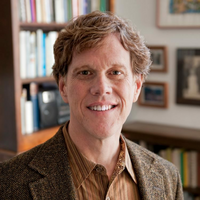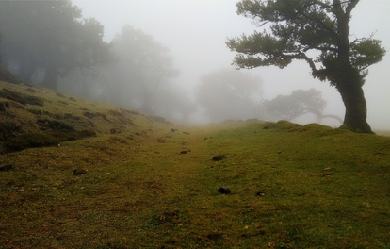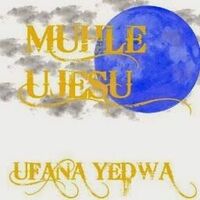
Info
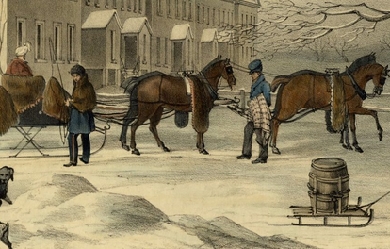
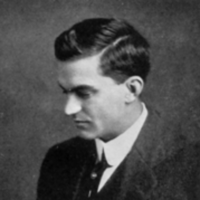
William Harris Lloyd Roberts (31 October 1884– 28 June 1966) was a Canadian writer, poet, and playwright. He was born in Fredericton, New Brunswick, the son of noted Canadian poet Charles George Douglas Roberts and Mary Isabel Fenety. After an education by private tutors, he attended King’s Collegiate School then, in 1905, Fredericton High School. In 1903 he performed clerical work at McClure’s magazine. From 1904 until 1907 he was an assistant editor at the Outing magazine, based in New York City. He wrote short stories and poetry for various magazines, plus performing part-time newspaper work starting in 1911. On January 1, 1914, he was married to Helen Hope Farquhar Bolmain. The couple had a daughter, Patricia Bliss, before Helen died. In 1912, he became editor of immigration literature for the Canadian Department of Interior in Ottawa. Two years later, he served as a correspondent for the Timer and Grazing branch of the Interior Department in Ottawa. On August 15, 1914, he married his second wife, Lila White; the couple divorced shortly thereafter. After 1920 he retired from work in order to devote all of his time to writing fiction, drama, poetry, and special articles. From 1925 until 1939 he was a correspondent for the Christian Science Monitor, then he performed public relations for the Royal Canadian Mounted Police up to 1945. His third marriage in 1943 was to Julia Bristow, and they would have two daughters. Bibliography * England Over Seas (1914) * Come Quietly, Britain (1915) * Mother Doneby (1916) * The Book of Roberts (1923) * Along the Ottawa (1927) * I Sing of Life (1937) References Wikipedia—https://en.wikipedia.org/wiki/William_Harris_Lloyd_Roberts
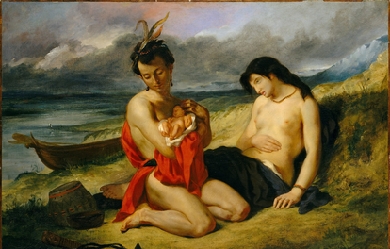
Paula Gunn Allen (October 24, 1939 – May 29, 2008) was a Native American poet, literary critic, activist, professor, and novelist. Of mixed-race European-American, Native American, and Arab-American descent, she identified with her mother's people, the Laguna Pueblo and childhood years. She drew from its oral traditions for her fiction poetry and also wrote numerous essays on its themes. She edited four collections of Native American traditional stories and contemporary works and wrote two biographies of Native American women.
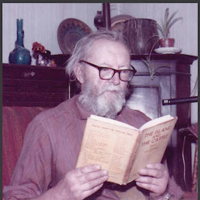
Nicholas Moore (16 November 1918 – 26 January 1986) was an English poet, associated with the New Apocalyptics in the 1940s, whose reputation stood as high as Dylan Thomas’s. He later dropped out of the literary world. Moore was born in Cambridge, England, the elder child of the philosopher G. E. Moore and Dorothy Ely. His paternal uncle was the poet, artist and critic Thomas Sturge Moore, and his brother was the composer Timothy Moore (1922-2003). He was educated at the Dragon School in Oxford, Leighton Park School in Reading, the University of St Andrews in Scotland, and Trinity College in Cambridge. Moore was editor and co-founder of a literary review, Seven (1938–40), while still an undergraduate. Seven, Magazine of People's Writing, had a complex later history: Moore edited it with John Goodland; it later appeared edited by Gordon Cruikshank, and then by Sydney D. Tremayne, after Randall Swingler bought it in 1941 from Philip O'Connor. While in Cambridge Moore became closely involved with literary London, in particular Tambimuttu. He published pamphlets under the Poetry London imprint in 1941 (of George Scurfield, G. S. Fraser, Anne Ridler and his own work). This led to Moore becoming Tambimuttu's assistant. Moore later worked for the Grey Walls Press. The Glass Tower, a selected poems collection from 1944, appeared with illustrations by the young Lucian Freud. In 1945 he edited The PL Book of Modern American Short Stories, and won Contemporary Poetry's Patron Prize (judged that year by W. H. Auden) for Girl with a Wine Glass. In 1947 he won the Harriet Monroe Memorial Prize for Girls and Birds and various other poems. Later Moore encountered difficulty in publishing; he was in the unusual position for a British poet of having a higher reputation in the USA. His association with the "romantics" of the 1940s was, in fact, rather an inaccurate reflection of his style. In the 1950s he worked as a horticulturist, writing a book The Tall Bearded Iris (1956). In 1968 he entered 31 separate pseudonymous translations of a single Baudelaire poem, in a competition for the Sunday Times, run by George Steiner. Each translation focused on a different element of the poem: rhyme, pattern, tropes, symbolism, etc. producing vastly different results, to illustrate the inadequacies and lacunae produced in translation. This work was published in 1973 as Spleen; it is also available online. Longings of the Acrobats, a selected poems volume, was edited by Peter Riley and published in 1990 by Carcanet Press. An interview with Riley concerning Moore's rediscovery and later years appears as a documentary element within the "Guilty River" chapter of Iain Sinclair's novel Downriver. According to Riley, Moore was extremely prolific and left behind many unpublished poems. An example of one of Moore's "pomenvylopes" – idiosyncratic documents consisting of poems and comments typed onto envelopes and posted to friends and acquaintances – appears online at The Fortnightly Review. His Selected Poems was published by Shoestring Press in 2014. Bibliography * A Wish in Season (1941) * The Island and the Cattle (1941) * A Book for Priscilla (1941) * Buzzing around with a Bee (1941) * The Cabaret, the Dancer, the Gentlemen (1942) * The Glass Tower (1944) * Thirty-Five Anonymous Odes (published anonymously, 1944) * The War of the Little Jersey Cows (published under the pseudonym "Guy Kelly", 1945) * The Anonymous Elegies and other poems (published anonymously, 1945) * Recollections of the Gala: Selected Poems 1943-48 (1950) * The Tall Bearded Iris (1956) * Anxious To Please (1968) (published under the pseudonym (anagram) "Romeo Anschilo", 1995 by Oasis Books) * Identity (1969) * Resolution and Identity (1970) * Spleen (1973) * Lacrimae Rerum (1988) * Longings of the Acrobats: Selected Poems (1990) * The Orange Bed (2011) References Wikipedia—http://en.wikipedia.org/wiki/Nicholas_Moore

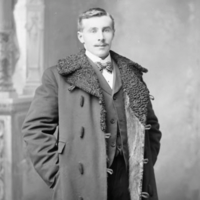
Charles Mair (September 21, 1838– July 7, 1927) was a Canadian poet and journalist. He was a fervent Canadian nationalist noted for his participation in the Canada First movement and his opposition to Louis Riel during the two Riel Rebellions in western Canada. Life Mair was born at Lanark, Upper Canada, to Margaret Holmes and James Mair. He attended Queen’s University but did not graduate. On leaving college, he became a journalist. In Ottawa in 1868, Mair was introduced by civil servant and writer Henry Morgan to young lawyers George Denison, William Foster, and Robert Haliburton. “Together they organized the overtly nationalistic Canada First movement, which began as a small social group.” Mair “represented the Montreal Gazette during the first Riel Rebellion, and was imprisoned and narrowly escaped being shot by the rebels.” Mair was a Freemason Mair "was an Officer of the Governor-General’s Body Guard during the second Riel rebellion in 1885, and was later employed in the Canadian civil service in the West." He died in Victoria, British Columbia. Writing Mair published the first book of poetry in post-Confederation Canada, 1868's Dreamland and Other Poems. “Negligible as verse,” says The Canadian Encyclopedia, "the volume gained interest when Mair escaped after being captured by Louis Riel during the Red River disturbances of 1869-70.” The Dictionary of Canadian Biography (DCB) states that Dreamland “demonstrates a conventional colonial approach to poetry. Such poems as 'August’ succeed in their attention to natural detail: descriptions of the blueflies, the milkmaids, and the 'ribby-lean’ cattle in parched fields anticipate the mature nature poetry of Archibald Lampman. But too often he wrote not of the timberlands he knew but of a dreamland weakly modelled upon the romantic flights of Keats.” However, the book was praised by “the established poet Charles Sangster, who referred to Canada’s sophisticated literary tradition as one that was habitually overlooked in the popular press.” Writing later in the Ottawa Journal, William Wilfred Campbell saw Dreamland as a precursor to the nature poetry later popularized in Canada by the Confederation Poets: “The thirty-three poems constitute the first attempt to deal with Canadian nature, in the manner of Keats and the other classic poets, and many of them in theme and treatment are similar to the verse of Lampman and Roberts.... And there are strong evidences in Mair’s work that he influenced these poets to a great extent.” Mair published Tecumseh, a historical drama mainly in blank verse dealing with the War of 1812, in 1886. Canadian critic Alan Filewood wrote of the political and philosophical ideas expressed by Mair in the poem: Mair’s projection of Canadian nationhood is embodied in the character of Lefroy, a Byronesque poet who flees civilization to seek solace in nature’s genius. He learns– tragically– from the British General Brock that natural law finds its outward form in the monarchic principle, and from the Indian chieftain Tecumseh that nature must be defended against the perversion of American materialism. The dying Tecumseh legitimizes the proto-(Anglo) Canadians as the natural guardians of the land, and Canadian manhood finds mature expression in a race of armed poets.(...) Mair looked to the day when the dominions would assume the responsibilities of adulthood: Then shall a whole family of young giants stand 'Erect, unbound, at Britain’s side-' her imperial offspring oversea, the upholders in the far future of her glorious tradition, or, should exhaustion ever come, the props and supports of her declining years. The DCB calls Tecumseh "a major contribution to our 19th-century literary heritage, wherein the War of 1812 is the central event of Canadian history. Among the many literary treatments of this war, including works by Sangster, John Richardson, and Sarah Anne Curzon... Tecumseh stands as the most accomplished." The Canadian Encyclopedia says that the poem’s “blank verse is pedestrian and untheatrical”, but it also tells us that “Tecumseh was important in the development of Canadian drama. It presents a vision of Canada as a co-operative enterprise in contrast with the self-seeking individualism of the United States.” Recognition Mair was elected a Fellow of the Royal Society of Canada in 1889. In 1937 he was designated a Person of National Historic Significance. Canadian folksinger Gordon Lightfoot adapted a line from Tecumseh, “There was a time on this fair continent,” for the first line in his 1967 historical ballad, “The Canadian Railroad Trilogy” ("There was a time in this fair land when the railroad did not run"). Publications * Dreamland and Other Poems. London: S. Low, 1868. Montreal: Dawson, 1868, * Tecumseh. Toronto: Hunter, Rose & Co., 1886. London: Chapman & Hall, 1886. * Through the Mackenzie Basin: A Narrative of the Athabasca and Peace River Treaty Expedition of 1899 . London: Simpkin, Marshall, Hamilton, Kent & Co., 1903. References Wikipedia—https://en.wikipedia.org/wiki/Charles_Mair
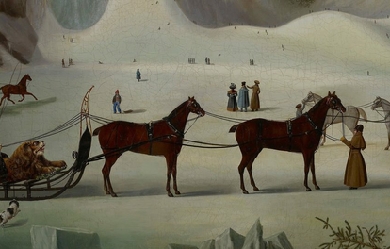
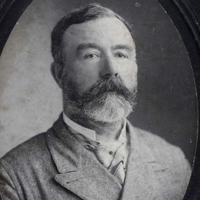
Edward William Thomson was born in Toronto township, county of Peel, Ontario, February 12th, 1849. His father was William Thomson, grandson of Archibald Thomson, the first settler in Scarboro. His grandfather Edward William Thomson, was present at the taking of Detroit, and served with distinction under Brock at Queenston Heights; and was afterwards well known in Upper Canada as Col. E. W. Thomson of the Legislative Council, and as the one successful opponent of William Lyon Mackenzie in an election for the Legislature. The mother of the present E. W. Thomson was Margaret Hamilton Foley, sister of the Hon. M. H. Foley, twice Postmaster-General of the united Canadas. The future poet was educated at the Brantford Grammar School, and at the Trinity College Grammar School at Weston; but when about fourteen years of age, he was sent to an uncle and aunt in Philadelphia and given a position in a wholesale mercantile house as 'office junior.' Finding this employment very uncongenial, he enlisted in the Union army, in October, 1864, as a trooper in the 3rd Pennsylvania Cavalry. This corps was engaged twice at Hatcher's Run, and was with Grant when he took Petersburgh. Discharged in August, 1865, he returned to the parental home at Chippewa, Ontario. In June, 1866, when the Fenians raided Upper Canada, young Thomson promptly enlisted in the Queen's Own, and was in action at the Ridgeway fight. The following year he entered the profession of Civil Engineering, and in 1872 was registered a Provincial Land Surveyor. He practised his profession until December, 1878, when at the invitation of the Hon. George Brown, he joined the staff of The Globe, Toronto, as an editorial writer. Four years later the Manitoba boom attracted him, and he practised surveying for two or three years in Winnipeg. In 1885, he rejoined The Globe staff, but retired again in 1891, because of his opposition to the Liberal policy of Unrestricted Reciprocity. Shortly afterwards he was invited to join the staff of the Youth's Companion. He accepted and remained for eleven years. Since 1903, he has lived in Ottawa, employed as a newspaper correspondent and engaged in literary work.The Many-Mansioned House and Other Poems was issued in 1909. His poems, like his short stories, are lucid, vital, original. References http://digital.library.upenn.edu/women/garvin/poets/thomson.html
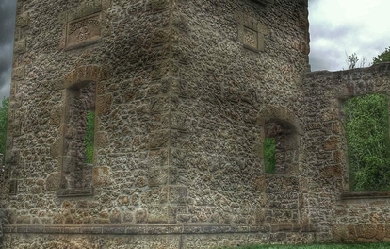
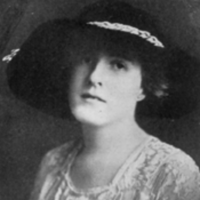
Agnes Ethelwyn Wetherald was born of English-Quaker parents at Rockwood, Ontario, April 26th, 1857. Her father was the late Rev. William Wetherald, who founded the Rockwood Academy about the middle of the last century, and was its principal for some years. He was a lover of good English, spoken and written, and his talented daughter has owed much to his careful teaching. He was the teacher whom the late James J. Hill, the railway magnate, had held in such grateful remembrance. Additional education was received by Miss Wetherald at the Friends' Boarding School, Union Springs, N.Y., and at Pickering College. Miss Wetherald began the writing of poetry later in life than most poets and her first book of verse, The House of the Trees and Other Poems, did not appear until 1895. This book at once gave her high rank among women poets. Prior to this, she had collaborated with G. Mercer Adam on writing and publishing a novel, An Algonquin Maiden, and had conducted the Woman's Department in The Globe, Toronto, under the nom de plume, 'Bel Thistlewaite.' In 1902, appeared her second volume of verse, Tangled in Stars, and, in 1904, her third volume, The Radiant Road. In the autumn of 1907, a collection of Miss Wetherald's best poems was issued, entitled, The Last Robin: Lyrics and Sonnets. It was warmly welcomed generally, by reviewers and lovers of poetry. The many exquisite gems therein so appealed to Earl Grey, the then Governor-General of Canada, that he wrote a personal letter of appreciation to the author, and purchased twenty-five copies of the first edition for distribution among his friends. For years Miss Wetherald has resided on the homestead farm, near the village of Fenwick, in Pelham Township, Weland county, Ontario, and there in the midst of a large orchard and other rural charms, has dreamed, and visioned, and sung, pouring out her soul in rare, sweet songs, with the naturalness of a bird. And like a bird she has a nest in a large willow tree, cunningly contrived by a nature-loving brother, where her muse broods contentedly, intertwining her spirit with every aspect of the beautiful environment.

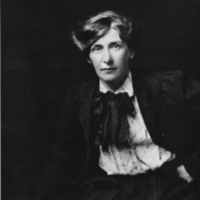
Cicely Mary Hamilton (née Hammill, 15 June 1872– 6 December 1952), was an English actress, writer, journalist, suffragist and feminist, part of the struggle for women’s suffrage in the United Kingdom. She is now best known for the play How the Vote was Won, which sees all of England’s female workers returning to their nearest male relative for financial support.. She is also credited as author of one of the most frequently performed suffrage plays, A Pageant of Great Women (1909), which first put Jane Austen on the stage as one of its “Learned Women.” Biography Cicely Mary Hammill was born in Paddington, London and educated in Malvern, Worcestershire. After a short spell in teaching she acted in a touring company. Then she wrote drama, including feminist themes, and enjoyed a period of success in the commercial theatre. In 1908 she and Bessie Hatton founded the Women Writers’ Suffrage League. This grew to around 400 members, including Ivy Compton-Burnett, Sarah Grand, Violet Hunt, Marie Belloc Lowndes, Alice Meynell, Olive Schreiner, Evelyn Sharp, May Sinclair and Margaret L. Woods. It produced campaigning literature, written by Sinclair amongst others, and recruited many prominent male supporters. Hamilton supplied the lyrics of “The March of the Women”, the song which Ethel Smyth composed in 1910 for the Women’s Social and Political Union. In the days before radio, one effective way to get a message out into society and to have it discussed was to produce short plays that could be performed around the country, and so suffrage drama was born. Elizabeth Robins’s Votes for Women and Cicely Hamilton and Christopher St. John’s How the Vote Was Won are two predominant examples of the genre. Hamilton also wrote A Pageant of Great Women, a highly successful women’s suffrage play based on the ideas of her friend, the theatre director Edith Craig. Hamilton played Woman while Craig played the painter Rosa Bonheur, one of the 50 or so great women in the play. It was produced all over the UK from 1909 until the First World War. Hamilton was a member of Craig’s theatre society, the Pioneer Players. Her play Jack and Jill and a Friend was one of the three plays in the Pioneer Players’ first production in May 1911. During World War I Hamilton initially worked in the organisation of nursing care, and then joined the army as an auxiliary. Later she formed a repertory company to entertain the troops. After the war, she wrote as a freelance journalist, particularly on birth control, and as a playwright for the Birmingham Repertory Company. In 1938 she was given a Civil List pension. Hamilton’s Theodore Savage (1922, vt. Lest Ye Die 1928) is a science-fiction novel about a Britain devastated by a war. In July 2017, the Finborough Theatre staged the first London production of Hamilton’s play 'Just to Get Married’ in over 100 years. It received positive reviews (4 stars) from The Times The Observer The Evening Standard and The New York Times The production was directed by Melissa Dunne and the cast included Tania Amsel, Nicola Blackman, Joanne Ferguson, Lauren Fitzpatrick, Jonny McPherson, Stuart Nunn, Philippa Quinn, Simon Rhodes and Joshua Riley.
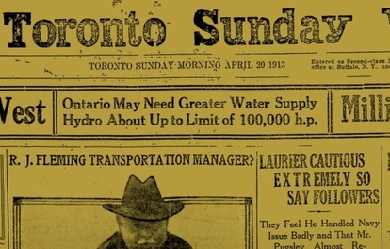
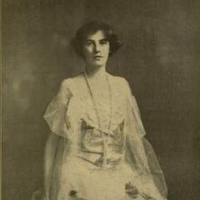
In a very real sense Miss Laura Elizabeth McCully is a Toronto writer, as, with the exception of one academic year in the United States and a few months in Ottawa, she has lived all her life in this city. She is a grand niece of the late Hon. John McCully, of Truro, Nova Scotia, one of the Fathers of Confederation; and is the daughter of Samuel Edward McCully, M.D., and Helen (Fitzgibbon) McCully. Her father is of Manx descent, and her mother is a descendant of the late James McBride of Halton county, Ontario, magistrate, who was one of the pioneers of this province, and who heroically cleared off forest and left to his heirs, one thousand acres of valuable farm lands. Miss McCully's poetry is enriched by classical illustrations, and expressed in forceful and melodious language. Her imagination relates us to the universe and to humanity. Wordsworth found new lessons in the fields and woods, and taught them; Lanier made trees, flowers and clouds our intimate friends; when we read Miss McCully's nature poems we are not conscious of the moralizing of the poet, we are in the glens ourselves looking at the afterglow, with the purity, the glory, the growth spirit and the transforming beauty of nature flowing into our lives. In a few flaming lines her stories reveal the love, the despair, and the ultimately triumphant faith of humanity. With tender pathos she unveils the evils of social and industrial conditions, and in clear tones arouses each soul, and makes it conscious of the splendour of the better conditions ahead, and thrills it with the determination to achieve for justice, freedom, and truth. – JAMES L. HUGHES, LL. D.

Denis Florence MacCarthy (1817–1882) was an Irish poet, translator, and biographer, born in Lower O’Connell Street, Dublin. Life MacCarthy was born in Lower O’Connell Street, Dublin, on 26 May 1817, and educated there and at St Patrick’s College, Maynooth. He acquired an intimate knowledge of Spanish from a learned priest, who had spent much time in Spain, which he was later to turn to good advantage. In April 1834, before turning seventeen, MacCarthy contributed his first verses to the Dublin Satirist. He was one of a coterie of writers whose works appeared in the Nation, which had been started by Charles Gavan Duffy in 1842. Writing under the pseudonym “Desmond”, most of MacCarthy’s patriotic verse appeared in this organ. In 1846 he was called to the Irish bar, but never practised. In the same year he edited The Poets and Dramatists of Ireland, which he prefaced with an essay on the early history and religion of his countrymen. About this time he also edited The Book of Irish Ballads (by various authors), with an introductory essay on ballad poetry in general. His Ballads, Poems, and Lyrics, appeared in 1850, original and translated. His attention was first directed to Pedro Calderón de la Barca by a passage in one of Percy Bysshe Shelley’s essays, and from then on the interpretation of the “Spanish Shakespeare” claimed the greater part of his attention. The first volume of his translations, containing six plays, appeared in 1853, and was followed by further instalments in 1861, 1867, 1870, and 1873. His version of Daybreak in Capacabana was completed only a few months before his death. Until 1864 he resided principally on Killiney Hill, overlooking Dublin Bay. The delicate health of some members of his family then rendered a change of climate imperative, and he paid a prolonged visit to continental Europe. On his return MacCarthy settled in London, where he published– in addition to his translations– Shelley’s Early Life, which contains an account of that poet’s visit to Dublin in 1812. MacCarthy had already resettled in his native land of Ireland for some months, when he died on Good Friday, 1882 at Blackrock, Dublin. His poetical gifts were inherited by his daughter, who became a nun, and wrote as Sister Mary Stanislaus. His poems are distinguished by a sense of harmony and sympathy with natural beauty. Such poems as “The Bridal of the Year,” “Summer Longings” (alias “Waiting for the May”), and his long narrative poem, “The Voyage of St. Brendan,” are among his most enduring works. The last-mentioned, which paraphrases the “Ave Maria Stella” as the evening song of the sailors, is also marked by the earnest religious feeling which marked its author throughout life. But it is by his version of Calderon that he is considered to have won a permanent place in English letters. His success is sufficiently testified by George Ticknor, who declared in his History of Spanish Literature that MacCarthy "has succeeded in giving a faithful idea of what is grandest and most effective in [Calderon’s] genius... to a degree which I had previously thought impossible. Nothing, I think, in the English language will give us so true an impression of what is most characteristic of the Spanish drama, and of Spanish poetry generally.” Published works Below are lists of his published works, some of which are available on-line at Project Gutenberg (see Online works below). Poetry Poems Published in Dublin by M. H. Gill and Son in 1882 An extensive collection edited by the poet’s son. The Book of Irish Ballads Published in Dublin by James Duffy in 1846, revised in 1869. Ballads, Poems, and Lyrics, Original and Translated Published in Dublin by James McGlashan in 1850. The Bell-Founder, And Other Poems Published in London by David Bogue in 1857. Underglimpses, And Other Poems Published in London by David Bogue in 1857. Irish Legends And Lyrics Published in Dublin by McGlashan & Gill in 1858. Poems of Denis F. McCarthy [sic], with Life and Notes Published in Dublin and Cork by The Educational Company, Ltd., no date. Drama Dramas of Calderon, Tragic, Comic, and Legendary Published in London by Charles Dolman in 1853. Containing “The Constant Prince” ("El Principe Constante"), “The Secret in Words” ("El Secreto a Voces"), “The Physician of His own Honour” ("El Medico de Su Honra"), “Love after Death” ("Amar despues de la Muerte"), “The Purgatory of Saint Patrick” ("El Purgatorio de San Patricio"), and “The Scarf and the Flower” ("La Banda y la Flor"). Rebound with a foreword in 1886 for the Memorial Fund Committee. Love the Greatest Enchantment: The Sorceries of Sin: The Devotion of the Cross Published in London by Longtan, Green, Longman and Roberts in 1861. Containing (with original language texts) “El Mayor Encanto Amor, Los Encantos de la Culpa” (an “Auto Sacramental”), and “La Devocion de la Cruz.” Mysteries of Corpus Christi Published in Dublin by James Duffy in 1867. Containing “Balshazza’s Feast” ("La Cena de Balthasar") and “The Divine Philothea” ("La Divina Filotea"), two “Auto Sacramentales.” The Two Lovers of Heaven: Chrysanthus and Daria Published in Dublin by John F. Fowler in 1870. Containing Los dos amantes del cielo: Crisanto y Daria. Calderon’s Dramas Published in London by Henry S. King in 1873. Containing “Life is a Dream” ("La Vida es Sueño"), “The Wonder-Working Magician” ("El Magico Prodigioso"), and a new edition of “The Purgatory of St. Patrick” ("Purgatorio de San Patricio"). Daybreak at Capacabana (La Aurora en Copacabana) was completed shortly before the translator’s death. Biography The Poets and Dramatists of Ireland Published in Dublin by James Duffy in 1846. Shelley’s Early Life Published in London by John Camden Hotten in 1872. References Wikipedia—https://en.wikipedia.org/wiki/Denis_Florence_MacCarthy
The author was born in México City, in 1964; He graduated from the Universidad Nacional Autónoma de México as an Orthopaedic Surgeon. His passions are, his children: Nadezda, Bruno, and his mother: Inés, to who he dedicates most of his time. About his affections: anthropology, world's history, science fiction, to enjoy a nice and spicy meal with a fine cigar, rock music... The Beatles!, gardening, to take a long afternoon walking and sports. His heroes are John Winston Ono Lennon, Vincent Van Gogh... And James Tiberius Kirk. “Life is too short to live with fear about feelings... I wish I could turn back time, to let know those who have left us, that in my life... I loved them.”

I am a younger writer, I will say I'm 14. I use poetry as an outlet to express my feelings and hopefully help people who are in rough patches of there life. I take criticism very well, I fact I greatly encourage it! I'm looking forward to improve my skill level with the help of all of you!

Grew up on a little gem in the Caribbean, a tourist attraction the eyes never misses. There I had my education, primary through college. Life has always been a challenge but with God I keep climbing, and my dreams are slowing becoming. Writer, teacher, website owner of https://www.livingtoreachacme.com/ and more. Always loved poetry. I dreamed of poetry, tried but never thought I was good enough. Today, I am here, I stand only by the Grace of God. He is just so awesome!!!!

My name is Kamu, but names only stay important in the physical world. I am a writer, a poet, a photographer, and an artist. I am a person in this world, that just wants to contribute to all the creative energy in this world. Hoping that my poems will inspire and positively affect people, to let them wander into the deeper side of their life, to pull out the words from their thoughts, and creatively place them into reality. In my journey through life, I am constantly being awakened into someone else's imagination, and I share my thoughts and reflect upon theirs, being inspired to write from ideas that we have all put out together, sharing the images and emotions that come from our complex human minds. To me, questions are the most important thing of all. The art of questioning all and having theories and trying to fill out the unknown seems to be one of my greatest fascinations. I love thinking about things that stay a mystery in this world. It is what inspires me to write. Writing is a way for me to express in a way that is unavailable in any other form of art, or on a greater scale, life. I hope you enjoy what I am trying to express, and I hope to be inspired by your creativity as well. Thank you.

Stay at home Mom and Gram. Trying to accomplish Something More Than Nothing! On a mission to be more... Leaving my mark upon this earth in indelible ink! Singer/ Songwriter, Musician Blogger... I have a Blog on Google Blogger and on WordPress Please follow me on YouTube and on SoundCloud!!!

Hello ladies and gents I am a 32 year old black Lesbian and proud of it. I am a writer been writing sense 14 and been working on my poetry book called the lesbian life Soon will be comings out. I love thick, voluptuous , big beautiful women Know i love women only not here because i am desperat u am here to share my work. And also here to read and enjoy other poets work or musician s. I love both. I write inspirational poetry, love, erotica, children, Life poetry, anything about life the reality of it. Spiritual etc. I love God i am a Christian Lesbian God understand my life style not here to Judge, to compete I am here to relax share poetry, verse, expressions and live my life.

I am a young man who grow up. Without a Father love but I am thanks GOD because I did. Have my Mother full time and my granny too .so that were I started writing poems and short stories that why I write about what I see happening in my community and my society too.I love myself. Too much and like to wear some suits and be clean also in my first options and lock my vice too just listen to people who really care about me so much
a mature lady of 57 that is enjoying time to do what she really loves. I love to paint, to grow roses, and to write. I adore my two grand daughters, and my children. The time is short, and every day I get to be here is a blessing. The god of love and righteousness is my hope. Worked as an RN for many years, interested in healing physical and spiritual. Hope to finish a manuscript soon and get it published.


